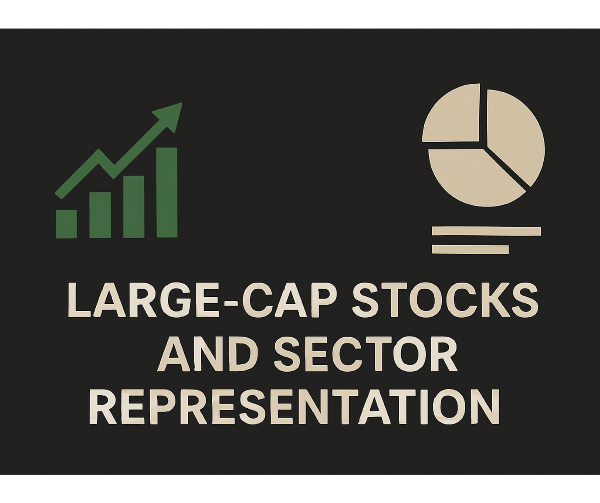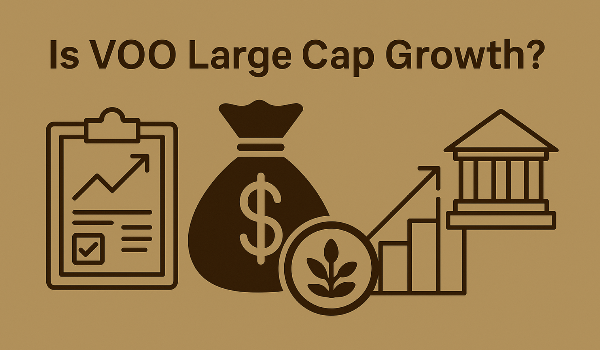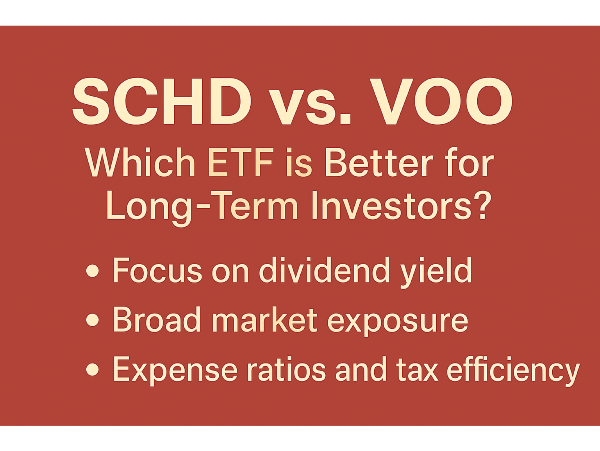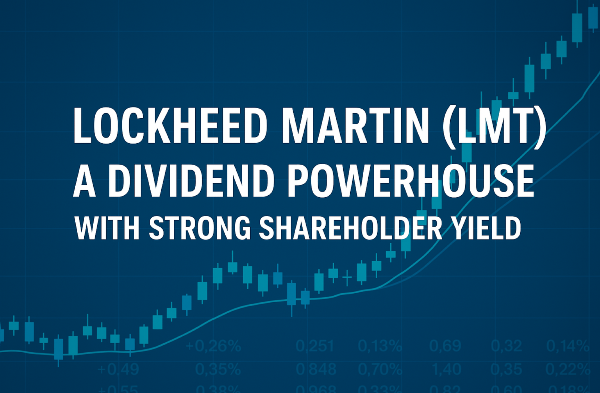Explore how large-cap stocks are distributed across sectors like technology, healthcare, and energy—and what that means for your portfolio strategy.
How Large-Cap Stocks Shape Sector Influence in the Market
Large-cap stocks—typically defined as companies with a market capitalization exceeding $10 billion—play a dominant role in the equity market. These firms are often industry leaders with established revenue streams, global reach, and strong investor confidence. Their size and stability make them key components of major indices like the S&P 500 and Russell 1000, where they significantly influence overall market performance.
However, not all large-cap stocks are distributed evenly across sectors. Sector representation refers to how much weight each industry holds within large-cap indices, and it’s a critical factor for investors aiming to build diversified, risk-adjusted portfolios.
For example, technology and healthcare sectors currently command the largest shares, while sectors like utilities and materials hold smaller positions. Understanding these allocations helps investors avoid overexposure to dominant sectors and identify opportunities in underweighted areas.
This article will explore how large-cap stocks are distributed across sectors, examine historical shifts in sector dominance, and offer practical insights for portfolio construction based on sector weightings and market trends.
What Are Large-Cap Stocks and Why They Matter for Sector Allocation
Want expert insights from leading investment podcasts? Scroll to the end to the Podcast Transcripts📜
These firms are often industry leaders with established business models, global operations, and strong financials. Market capitalization is calculated by multiplying a company’s share price by its total number of outstanding shares. Well-known examples include Apple AAPL, Microsoft MSFT, and Johnson & Johnson JNJ.
Because of their size and influence, large-cap stocks are considered more stable and liquid than their mid- or small-cap counterparts, making them a core component of many investment portfolios.
These stocks play a central role in major indices such as the S&P 500 and the Russell 1000. The S&P 500 includes 500 of the largest U.S.-listed companies and serves as a benchmark for the overall health of the U.S. equity market. The Russell 1000, while broader, also focuses on the largest companies and captures about 93% of the total U.S. market capitalization.
In a recent episode of The Investor’s Podcast Network, hosts emphasized that “large-cap stocks anchor the market’s direction and sector momentum” (🎧 09:45). Meanwhile, Morningstar’s Investing Insights highlighted that “sector weightings in large-cap indices reflect economic leadership trends” (🎧 11:20). These insights underscore the importance of understanding how large-cap stocks influence sector performance and why investors should monitor their distribution across industries when building diversified portfolios.
Sources:
Forbes – What Are Large-Cap Stocks?
Investopedia – S&P 500 vs. Russell 1000
FTSE Russell – Russell 1000 Index Methodology
The Investor’s Podcast Network
Morningstar’s Investing Insights
Yahoo Finance – Sector Performance and ETF Holdings
ETF.com – Sector Exposure in Large-Cap ETFs
S&P Dow Jones Indices – Sector Breakdown of the S&P 500
StockBossUp – Sector Representation in Large-Cap Stocks
FasterCapital – Sector Dominance and Market Cap Impact
Sector Allocation in Large-Cap Indices: Where the Weight Lies
These indices are market-cap weighted, meaning larger companies exert more influence. As a result, sectors dominated by mega-cap firms naturally carry more weight. Currently, the technology sector leads the pack, comprising approximately 26% of the S&P 500.
This dominance is driven by giants like Apple AAPL, Microsoft MSFT, and Nvidia NVDA. Healthcare follows at around 14.5%, with key players such as Johnson & Johnson JNJ and UnitedHealth Group UNH. Financials round out the top three at roughly 12.9%, led by institutions like JPMorgan Chase JPM and Bank of America BAC. Sector weightings are not static—they shift with market cycles.
In a recent episode of The Investor’s Podcast Network, analysts noted, “Sector weightings reflect not just market cap, but investor sentiment and macroeconomic momentum” (🎧 08:50). Meanwhile, Morningstar’s Investing Insights emphasized, “Understanding sector drift is key to managing index exposure over time” (🎧 11:05). These insights reinforce the importance of sector allocation in shaping both index behavior and portfolio strategy.
Sources:
S&P Dow Jones Indices – Sector Breakdown of the S&P 500
Morningstar – Sector Weightings in Index Funds
Yahoo Finance – Sector Performance and ETF Holdings
ETF.com – Sector Exposure in Large-Cap ETFs
The Investor’s Podcast Network
Morningstar’s Investing Insights
StockBossUp – Sector Representation in Large-Cap Stocks
FasterCapital – Sector Dominance and Market Cap Impact
FTSE Russell – Russell 1000 Index Methodology
Investopedia – Market Capitalization and Sector Allocation
SoFi – S&P 500 Sector Weights
Advisor Channel – S&P 500 Sectors and Industries
Sector-by-Sector Breakdown of Large-Cap Influence
Here’s a markdown table ranking the mentioned large-cap stocks by investment attractiveness, considering dividend yield, payout ratio, and business fundamentals. The ranking prioritizes a balance of yield sustainability, sector leadership, and long-term growth potential.
Large-Cap Stock Rankings by Investment Attractiveness
| Rank |
Company Name |
Symbol |
Dividend Yield |
Payout Ratio |
Description |
| 1 |
Microsoft |
MSFT |
0.90% |
25.98% |
Develops software, cloud infrastructure (Azure), and enterprise solutions. |
| 2 |
Johnson & Johnson |
JNJ |
3.23% |
84.79% |
Manufactures pharmaceuticals, medical devices, and consumer health products. |
| 3 |
Procter & Gamble |
PG |
2.51% |
~60% (est.) |
Produces household and personal care brands like Tide, Gillette, and Pampers. |
| 4 |
Coca-Cola |
KO |
2.77% |
~75% (est.) |
Global beverage company known for Coca-Cola, Sprite, and other soft drinks. |
| 5 |
Chevron |
CVX |
4.75% |
~60% (est.) |
Engages in oil and gas exploration, refining, and energy production. |
| 6 |
ExxonMobil |
XOM |
3.70% |
~50% (est.) |
Operates in oil, gas, and petrochemicals with global upstream and downstream assets. |
| 7 |
JPMorgan Chase |
JPM |
1.99% |
~30% (est.) |
Leading global bank offering financial services, investment banking, and asset management. |
| 8 |
Bank of America |
BAC |
2.32% |
~28% (est.) |
Provides banking, lending, and wealth management services. |
| 9 |
UnitedHealth Group |
UNH |
2.81% |
~35% (est.) |
Offers health insurance and healthcare services through Optum and UnitedHealthcare. |
| 10 |
Apple |
AAPL |
0.51% |
15.77% |
Designs consumer electronics like iPhones, Macs, and services like iCloud. |
| 11 |
Alphabet |
GOOGL |
0.46% |
9.83% |
Parent of Google, YouTube, and Android; dominates digital advertising and AI. |
| 12 |
Union Pacific |
UNP |
~2.3% (est.) |
~45% (est.) |
Operates freight railroads across the western U.S., transporting goods and commodities. |
| 13 |
Boeing |
BA |
0.00% |
N/A |
Designs and manufactures commercial airplanes, defense systems, and space technology. |
| 14 |
Amazon |
AMZN |
0.00% |
0% |
E-commerce and cloud computing giant with AWS and global logistics operations. |
| 15 |
Tesla |
TSLA |
0.00% |
0% |
Produces electric vehicles, energy storage, and solar products. |
Technology leads with approximately 26% of the index’s weight, driven by mega-cap firms like Apple AAPL, Microsoft MSFT, and Alphabet GOOGL. These companies shape not only the tech sector but also the broader market due to their size and innovation-driven growth. Healthcare follows at around 14.5%, anchored by Johnson & Johnson JNJ and UnitedHealth Group UNH, both known for their consistent earnings and defensive characteristics. Financials represent roughly 12.9% of the index, with JPMorgan Chase JPM and Bank of America BAC leading the charge. These institutions are central to capital markets and economic cycles.
Consumer discretionary, at about 10.6%, includes growth-oriented names like Amazon AMZN and Tesla TSLA, which thrive during economic expansions. Industrials, comprising around 8.5%, are represented by Boeing BA and Union Pacific UNP, reflecting the sector’s role in infrastructure and logistics. Energy, at approximately 4.1%, includes ExxonMobil XOM and Chevron CVX, whose performance is closely tied to commodity prices. Consumer staples, around 6.5%, feature defensive giants like Procter & Gamble PG and Coca-Cola KO, offering stability during downturns. Utilities (2.5%) and real estate (2.4%) provide income and inflation hedges, while materials (2.6%) and communication services (8.8%) round out the index with companies like Meta Platforms and Verizon.
In The Investor’s Podcast Network, analysts noted, “Sector weightings evolve with innovation and capital flows” (🎧 13:10). Meanwhile, Morningstar’s Investing Insights emphasized, “Understanding sector shifts helps investors anticipate market leadership” (🎧 14:55). These insights highlight the importance of tracking sector trends to align portfolios with changing economic dynamics.
Sources:
S&P Dow Jones Indices – Sector Breakdown of the S&P 500
Morningstar – Sector Weightings in Index Funds
ETF.com – Sector Exposure in Large-Cap ETFs
The Investor’s Podcast Network
Morningstar’s Investing Insights
StockBossUp – Sector Representation in Large-Cap Stocks
Corporate Finance Institute – S&P Sector Overview
Yahoo Finance – Sector Performance and ETF Holdings
FasterCapital – Sector Dominance and Market Cap Impact
FTSE Russell – Russell 1000 Index Methodology
Investopedia – Market Capitalization and Sector Allocation
SoFi – S&P 500 Sector Weights
Advisor Channel – S&P 500 Sectors and Industries
World P/E Ratio – Sector P/E and Valuation
CGAA – Publicly Traded Companies by Sector
Why Sector Representation Matters in Portfolio Strategy
Sector representation plays a critical role in shaping portfolio diversification and managing risk. When a portfolio is heavily concentrated in a single sector—such as technology—it becomes more vulnerable to sector-specific downturns. Understanding sector weight is essential when investing in ETFs or index funds.
Many investors assume broad-market ETFs are inherently diversified, but in reality, they may be heavily tilted toward sectors like technology or healthcare. According to Charles Schwab, some sector funds are so concentrated that just a few companies—such as Apple AAPL, Microsoft MSFT, and Nvidia NVDA—can account for nearly half the fund’s weight.
In The Investor’s Podcast Network, analysts noted, “Sector concentration can quietly erode diversification if left unchecked” (🎧 09:10). Meanwhile, Morningstar’s Investing Insights emphasized, “Even broad index funds can carry hidden sector biases” (🎧 10:55). These insights reinforce the importance of reviewing sector allocations to ensure alignment with your investment goals and risk tolerance.
Sources:
Charles Schwab – Sector Index Funds and Concentration Risk
The Motley Fool – Sector ETFs: A Diversified Strategy
Morningstar – Do Sector Funds Deserve a Place in Your Portfolio?
The Investor’s Podcast Network
Morningstar’s Investing Insights
StockBossUp – Sector Representation in Large-Cap Stocks
ETF.com – Sector Exposure in Large-Cap ETFs
FTSE Russell – Russell 1000 Index Methodology
Yahoo Finance – Sector Performance and ETF Holdings
FasterCapital – Sector Dominance and Market Cap Impact
Investopedia – Market Capitalization and Sector Allocation
SoFi – S&P 500 Sector Weights
Advisor Channel – S&P 500 Sectors and Industries
World P/E Ratio – Sector P/E and Valuation
CGAA – Publicly Traded Companies by Sector
Strategic Takeaways for Investors Using Sector Data
Investors can use sector data as a powerful tool to build balanced, resilient portfolios. By analyzing sector weightings in large-cap indices, you can identify areas of overexposure and adjust allocations to reduce concentration risk. Sector ETFs offer a convenient way to gain targeted exposure, while equal-weighted indices—such as the ALPS Equal Sector Weight ETF (EQL)—ensure that no single sector dominates performance.
Monitoring sector shifts in response to macroeconomic trends is equally important. Aligning sector exposure with the business cycle can enhance returns and reduce downside risk. Ultimately, sector awareness empowers investors to make informed decisions, whether through tactical tilts or long-term strategic positioning.
Sources:
SSGA – Sector Investing: A Powerful Portfolio Construction Tool
FasterCapital – Sector Allocation Strategies for Price Weighted Indices
ALPS Equal Sector Weight ETF (EQL)
StockBossUp – Sector Representation in Large-Cap Stocks
Morningstar – Sector Weightings in Index Funds
ETF.com – Sector Exposure in Large-Cap ETFs
The Investor’s Podcast Network
Morningstar’s Investing Insights
Yahoo Finance – Sector Performance and ETF Holdings
FTSE Russell – Russell 1000 Index Methodology
Investopedia – Market Capitalization and Sector Allocation
SoFi – S&P 500 Sector Weights
Advisor Channel – S&P 500 Sectors and Industries
World P/E Ratio – Sector P/E and Valuation
CGAA – Publicly Traded Companies by Sector
Conclusion
Understanding how large-cap stocks are distributed across sectors is essential for building a resilient, well-balanced portfolio. Sector representation not only influences index performance but also shapes the risk and return profile of individual investments. With technology, healthcare, and financials dominating large-cap indices, investors must remain vigilant about concentration risks and sector drift.
Tools like sector ETFs and equal-weighted indices can help mitigate imbalances, while monitoring macroeconomic trends allows for timely adjustments. Ultimately, aligning sector exposure with your investment goals and market outlook empowers you to navigate cycles more effectively and optimize long-term returns.
Podcast Transcripts 🎧
Motley Fool Money – Dividend Stocks for a Volatile Market
This episode explores how dividend-paying companies can provide stability during uncertain market conditions. The hosts discuss sectors like consumer staples and utilities, and highlight companies with strong balance sheets and consistent payout histories. A key quote: “Dividends are the ballast in your portfolio” (🎧 12:45), emphasizing their role in smoothing returns during volatility.
We Study Billionaires – How Billionaires Use Dividends
This episode dives into how legendary investors like Warren Buffett and Charlie Munger leverage dividend-paying stocks for long-term wealth building. At (🎧 10:15), the hosts note, “Steady growth from broad market exposure anchors long-term wealth,” and later (🎧 16:20), they explore how billionaires use dividend reinvestment to compound returns over decades.
Morningstar’s Investing Insights – Dividend Investing in 2025
This episode focuses on the outlook for dividend strategies in 2025. Analysts discuss undervalued sectors like healthcare and energy, and how dividend growth stocks are positioned for the year ahead. At (🎧 12:30), they state, “Low fees and market efficiency are key to building wealth,” and at (🎧 14:20), they highlight how diversification supports sustainable income.
Dividend Talk – From Dividend Cuts to Recovery
In this episode, the hosts examine companies that have cut dividends and their paths to recovery. They discuss Shell’s rebound post-2020 and the challenges faced by General Electric and 3M. At (🎧 11:36), they caution, “When a dividend seems too high, it’s a cue to investigate further,” and at (🎧 27:50), they analyze how dividend cuts can lead to long-term resilience.
The Long View – How to Build a Dividend Portfolio
This episode offers a deep dive into constructing a dividend-focused portfolio. The hosts discuss balancing yield with growth, sector diversification, and avoiding overconcentration. At (🎧 13:55), they share, “A diversified dividend portfolio shields against market shocks,” and at (🎧 21:18), they explain how to align dividend strategies with long-term wealth goals.
The Meb Faber Show – Avoiding Dividend Traps
Meb Faber discusses the hidden risks of high-yield dividend stocks, especially in taxable accounts. He advocates for a total return approach and highlights tax-efficient strategies. At (🎧 09:10), he warns, “A blind allegiance to dividends could be a very, very bad idea,” and at (🎧 12:40), he explains how stripping out top dividend payers can improve after-tax returns.
📌Read More About:
Top Large Cap Stocks https://stockbossup.com/pages/topics/large-cap
What Are Large US Cap Stocks?- https://stockbossup.com/pages/post/39168/what-are-large-cap-stocks-a-complete-guide-to-big-companies-in-the-u-s-market
What Sectors Are Represented in Large-Cap?- https://stockbossup.com/pages/post/39155/sector-representation-in-large-cap-stocks-a-comprehensive-breakdown
What Are the Largest Market Cap Sectors?- https://stockbossup.com/pages/post/39159/largest-market-cap-sectors-key-industries-driving-global-investment
Which Industry Has the Highest Market Cap?- https://stockbossup.com/pages/post/39160/industries-with-the-highest-market-capitalization-key-sectors-driving-global-investment
🌐Global & Industrial Picks:
Is Microsoft a Mega-Cap Stock?- https://www.stockbossup.com/pages/post/38850/is-microsoft-considered-a-mega-cap-stock
Is Apple a Mega-Cap?- https://stockbossup.com/pages/post/39186/is-apple-a-mega-cap-stock-understanding-its-market-influence
Is Amazon a Mega-Cap?- https://stockbossup.com/pages/post/39191/is-amazon-a-mega-cap-stock-evaluating-its-market-influence
Procter & Gamble Stock: Accurately Valued or Overpriced in 2025?- https://www.stockbossup.com/pages/post/38536/procter-gamble-stock-accurately-valued-or-overpriced-in-2025






























Explore how large-cap stocks are distributed across sectors like technology, healthcare, and energy—and what that means for your portfolio strategy.
How Large-Cap Stocks Shape Sector Influence in the Market
Large-cap stocks—typically defined as companies with a market capitalization exceeding $10 billion—play a dominant role in the equity market. These firms are often industry leaders with established revenue streams, global reach, and strong investor confidence. Their size and stability make them key components of major indices like the S&P 500 and Russell 1000, where they significantly influence overall market performance.
However, not all large-cap stocks are distributed evenly across sectors. Sector representation refers to how much weight each industry holds within large-cap indices, and it’s a critical factor for investors aiming to build diversified, risk-adjusted portfolios. For example, technology and healthcare sectors currently command the largest shares, while sectors like utilities and materials hold smaller positions. Understanding these allocations helps investors avoid overexposure to dominant sectors and identify opportunities in underweighted areas.
This article will explore how large-cap stocks are distributed across sectors, examine historical shifts in sector dominance, and offer practical insights for portfolio construction based on sector weightings and market trends.
What Are Large-Cap Stocks and Why They Matter for Sector Allocation
Want expert insights from leading investment podcasts? Scroll to the end to the Podcast Transcripts📜
These firms are often industry leaders with established business models, global operations, and strong financials. Market capitalization is calculated by multiplying a company’s share price by its total number of outstanding shares. Well-known examples include Apple AAPL, Microsoft MSFT, and Johnson & Johnson JNJ.
Because of their size and influence, large-cap stocks are considered more stable and liquid than their mid- or small-cap counterparts, making them a core component of many investment portfolios. These stocks play a central role in major indices such as the S&P 500 and the Russell 1000. The S&P 500 includes 500 of the largest U.S.-listed companies and serves as a benchmark for the overall health of the U.S. equity market. The Russell 1000, while broader, also focuses on the largest companies and captures about 93% of the total U.S. market capitalization.
In a recent episode of The Investor’s Podcast Network, hosts emphasized that “large-cap stocks anchor the market’s direction and sector momentum” (🎧 09:45). Meanwhile, Morningstar’s Investing Insights highlighted that “sector weightings in large-cap indices reflect economic leadership trends” (🎧 11:20). These insights underscore the importance of understanding how large-cap stocks influence sector performance and why investors should monitor their distribution across industries when building diversified portfolios.
Sources:
Forbes – What Are Large-Cap Stocks?
Investopedia – S&P 500 vs. Russell 1000
FTSE Russell – Russell 1000 Index Methodology
The Investor’s Podcast Network
Morningstar’s Investing Insights
Yahoo Finance – Sector Performance and ETF Holdings
ETF.com – Sector Exposure in Large-Cap ETFs S&P Dow Jones Indices – Sector Breakdown of the S&P 500
StockBossUp – Sector Representation in Large-Cap Stocks
FasterCapital – Sector Dominance and Market Cap Impact
Sector Allocation in Large-Cap Indices: Where the Weight Lies
These indices are market-cap weighted, meaning larger companies exert more influence. As a result, sectors dominated by mega-cap firms naturally carry more weight. Currently, the technology sector leads the pack, comprising approximately 26% of the S&P 500.
This dominance is driven by giants like Apple AAPL, Microsoft MSFT, and Nvidia NVDA. Healthcare follows at around 14.5%, with key players such as Johnson & Johnson JNJ and UnitedHealth Group UNH. Financials round out the top three at roughly 12.9%, led by institutions like JPMorgan Chase JPM and Bank of America BAC. Sector weightings are not static—they shift with market cycles.
In a recent episode of The Investor’s Podcast Network, analysts noted, “Sector weightings reflect not just market cap, but investor sentiment and macroeconomic momentum” (🎧 08:50). Meanwhile, Morningstar’s Investing Insights emphasized, “Understanding sector drift is key to managing index exposure over time” (🎧 11:05). These insights reinforce the importance of sector allocation in shaping both index behavior and portfolio strategy.
Sources:
S&P Dow Jones Indices – Sector Breakdown of the S&P 500
Morningstar – Sector Weightings in Index Funds
Yahoo Finance – Sector Performance and ETF Holdings
ETF.com – Sector Exposure in Large-Cap ETFs The Investor’s Podcast Network
Morningstar’s Investing Insights
StockBossUp – Sector Representation in Large-Cap Stocks
FasterCapital – Sector Dominance and Market Cap Impact
FTSE Russell – Russell 1000 Index Methodology
Investopedia – Market Capitalization and Sector Allocation
SoFi – S&P 500 Sector Weights
Advisor Channel – S&P 500 Sectors and Industries
Sector-by-Sector Breakdown of Large-Cap Influence
Here’s a markdown table ranking the mentioned large-cap stocks by investment attractiveness, considering dividend yield, payout ratio, and business fundamentals. The ranking prioritizes a balance of yield sustainability, sector leadership, and long-term growth potential.
Large-Cap Stock Rankings by Investment Attractiveness
Technology leads with approximately 26% of the index’s weight, driven by mega-cap firms like Apple AAPL, Microsoft MSFT, and Alphabet GOOGL. These companies shape not only the tech sector but also the broader market due to their size and innovation-driven growth. Healthcare follows at around 14.5%, anchored by Johnson & Johnson JNJ and UnitedHealth Group UNH, both known for their consistent earnings and defensive characteristics. Financials represent roughly 12.9% of the index, with JPMorgan Chase JPM and Bank of America BAC leading the charge. These institutions are central to capital markets and economic cycles.
Consumer discretionary, at about 10.6%, includes growth-oriented names like Amazon AMZN and Tesla TSLA, which thrive during economic expansions. Industrials, comprising around 8.5%, are represented by Boeing BA and Union Pacific UNP, reflecting the sector’s role in infrastructure and logistics. Energy, at approximately 4.1%, includes ExxonMobil XOM and Chevron CVX, whose performance is closely tied to commodity prices. Consumer staples, around 6.5%, feature defensive giants like Procter & Gamble PG and Coca-Cola KO, offering stability during downturns. Utilities (2.5%) and real estate (2.4%) provide income and inflation hedges, while materials (2.6%) and communication services (8.8%) round out the index with companies like Meta Platforms and Verizon.
In The Investor’s Podcast Network, analysts noted, “Sector weightings evolve with innovation and capital flows” (🎧 13:10). Meanwhile, Morningstar’s Investing Insights emphasized, “Understanding sector shifts helps investors anticipate market leadership” (🎧 14:55). These insights highlight the importance of tracking sector trends to align portfolios with changing economic dynamics.
Sources:
S&P Dow Jones Indices – Sector Breakdown of the S&P 500
Morningstar – Sector Weightings in Index Funds
ETF.com – Sector Exposure in Large-Cap ETFs The Investor’s Podcast Network
Morningstar’s Investing Insights
StockBossUp – Sector Representation in Large-Cap Stocks
Corporate Finance Institute – S&P Sector Overview
Yahoo Finance – Sector Performance and ETF Holdings
FasterCapital – Sector Dominance and Market Cap Impact
FTSE Russell – Russell 1000 Index Methodology
Investopedia – Market Capitalization and Sector Allocation
SoFi – S&P 500 Sector Weights
Advisor Channel – S&P 500 Sectors and Industries
World P/E Ratio – Sector P/E and Valuation
CGAA – Publicly Traded Companies by Sector
Why Sector Representation Matters in Portfolio Strategy
Sector representation plays a critical role in shaping portfolio diversification and managing risk. When a portfolio is heavily concentrated in a single sector—such as technology—it becomes more vulnerable to sector-specific downturns. Understanding sector weight is essential when investing in ETFs or index funds.
Many investors assume broad-market ETFs are inherently diversified, but in reality, they may be heavily tilted toward sectors like technology or healthcare. According to Charles Schwab, some sector funds are so concentrated that just a few companies—such as Apple AAPL, Microsoft MSFT, and Nvidia NVDA—can account for nearly half the fund’s weight.
In The Investor’s Podcast Network, analysts noted, “Sector concentration can quietly erode diversification if left unchecked” (🎧 09:10). Meanwhile, Morningstar’s Investing Insights emphasized, “Even broad index funds can carry hidden sector biases” (🎧 10:55). These insights reinforce the importance of reviewing sector allocations to ensure alignment with your investment goals and risk tolerance.
Sources:
Charles Schwab – Sector Index Funds and Concentration Risk
The Motley Fool – Sector ETFs: A Diversified Strategy
Morningstar – Do Sector Funds Deserve a Place in Your Portfolio?
The Investor’s Podcast Network
Morningstar’s Investing Insights
StockBossUp – Sector Representation in Large-Cap Stocks
ETF.com – Sector Exposure in Large-Cap ETFs FTSE Russell – Russell 1000 Index Methodology
Yahoo Finance – Sector Performance and ETF Holdings
FasterCapital – Sector Dominance and Market Cap Impact
Investopedia – Market Capitalization and Sector Allocation
SoFi – S&P 500 Sector Weights
Advisor Channel – S&P 500 Sectors and Industries
World P/E Ratio – Sector P/E and Valuation
CGAA – Publicly Traded Companies by Sector
Strategic Takeaways for Investors Using Sector Data
Investors can use sector data as a powerful tool to build balanced, resilient portfolios. By analyzing sector weightings in large-cap indices, you can identify areas of overexposure and adjust allocations to reduce concentration risk. Sector ETFs offer a convenient way to gain targeted exposure, while equal-weighted indices—such as the ALPS Equal Sector Weight ETF (EQL)—ensure that no single sector dominates performance.
Monitoring sector shifts in response to macroeconomic trends is equally important. Aligning sector exposure with the business cycle can enhance returns and reduce downside risk. Ultimately, sector awareness empowers investors to make informed decisions, whether through tactical tilts or long-term strategic positioning.
Sources:
SSGA – Sector Investing: A Powerful Portfolio Construction Tool
FasterCapital – Sector Allocation Strategies for Price Weighted Indices
ALPS Equal Sector Weight ETF (EQL)
StockBossUp – Sector Representation in Large-Cap Stocks
Morningstar – Sector Weightings in Index Funds
ETF.com – Sector Exposure in Large-Cap ETFs The Investor’s Podcast Network
Morningstar’s Investing Insights
Yahoo Finance – Sector Performance and ETF Holdings
FTSE Russell – Russell 1000 Index Methodology
Investopedia – Market Capitalization and Sector Allocation
SoFi – S&P 500 Sector Weights
Advisor Channel – S&P 500 Sectors and Industries
World P/E Ratio – Sector P/E and Valuation
CGAA – Publicly Traded Companies by Sector
Conclusion
Understanding how large-cap stocks are distributed across sectors is essential for building a resilient, well-balanced portfolio. Sector representation not only influences index performance but also shapes the risk and return profile of individual investments. With technology, healthcare, and financials dominating large-cap indices, investors must remain vigilant about concentration risks and sector drift.
Tools like sector ETFs and equal-weighted indices can help mitigate imbalances, while monitoring macroeconomic trends allows for timely adjustments. Ultimately, aligning sector exposure with your investment goals and market outlook empowers you to navigate cycles more effectively and optimize long-term returns.
Podcast Transcripts 🎧
Motley Fool Money – Dividend Stocks for a Volatile Market
This episode explores how dividend-paying companies can provide stability during uncertain market conditions. The hosts discuss sectors like consumer staples and utilities, and highlight companies with strong balance sheets and consistent payout histories. A key quote: “Dividends are the ballast in your portfolio” (🎧 12:45), emphasizing their role in smoothing returns during volatility.
We Study Billionaires – How Billionaires Use Dividends
This episode dives into how legendary investors like Warren Buffett and Charlie Munger leverage dividend-paying stocks for long-term wealth building. At (🎧 10:15), the hosts note, “Steady growth from broad market exposure anchors long-term wealth,” and later (🎧 16:20), they explore how billionaires use dividend reinvestment to compound returns over decades.
Morningstar’s Investing Insights – Dividend Investing in 2025
This episode focuses on the outlook for dividend strategies in 2025. Analysts discuss undervalued sectors like healthcare and energy, and how dividend growth stocks are positioned for the year ahead. At (🎧 12:30), they state, “Low fees and market efficiency are key to building wealth,” and at (🎧 14:20), they highlight how diversification supports sustainable income.
Dividend Talk – From Dividend Cuts to Recovery
In this episode, the hosts examine companies that have cut dividends and their paths to recovery. They discuss Shell’s rebound post-2020 and the challenges faced by General Electric and 3M. At (🎧 11:36), they caution, “When a dividend seems too high, it’s a cue to investigate further,” and at (🎧 27:50), they analyze how dividend cuts can lead to long-term resilience.
The Long View – How to Build a Dividend Portfolio
This episode offers a deep dive into constructing a dividend-focused portfolio. The hosts discuss balancing yield with growth, sector diversification, and avoiding overconcentration. At (🎧 13:55), they share, “A diversified dividend portfolio shields against market shocks,” and at (🎧 21:18), they explain how to align dividend strategies with long-term wealth goals.
The Meb Faber Show – Avoiding Dividend Traps
Meb Faber discusses the hidden risks of high-yield dividend stocks, especially in taxable accounts. He advocates for a total return approach and highlights tax-efficient strategies. At (🎧 09:10), he warns, “A blind allegiance to dividends could be a very, very bad idea,” and at (🎧 12:40), he explains how stripping out top dividend payers can improve after-tax returns.
📌Read More About:
Top Large Cap Stocks https://stockbossup.com/pages/topics/large-cap
What Are Large US Cap Stocks?- https://stockbossup.com/pages/post/39168/what-are-large-cap-stocks-a-complete-guide-to-big-companies-in-the-u-s-market
What Sectors Are Represented in Large-Cap?- https://stockbossup.com/pages/post/39155/sector-representation-in-large-cap-stocks-a-comprehensive-breakdown
What Are the Largest Market Cap Sectors?- https://stockbossup.com/pages/post/39159/largest-market-cap-sectors-key-industries-driving-global-investment
Which Industry Has the Highest Market Cap?- https://stockbossup.com/pages/post/39160/industries-with-the-highest-market-capitalization-key-sectors-driving-global-investment
🌐Global & Industrial Picks:
Is Microsoft a Mega-Cap Stock?- https://www.stockbossup.com/pages/post/38850/is-microsoft-considered-a-mega-cap-stock
Is Apple a Mega-Cap?- https://stockbossup.com/pages/post/39186/is-apple-a-mega-cap-stock-understanding-its-market-influence
Is Amazon a Mega-Cap?- https://stockbossup.com/pages/post/39191/is-amazon-a-mega-cap-stock-evaluating-its-market-influence
Procter & Gamble Stock: Accurately Valued or Overpriced in 2025?- https://www.stockbossup.com/pages/post/38536/procter-gamble-stock-accurately-valued-or-overpriced-in-2025